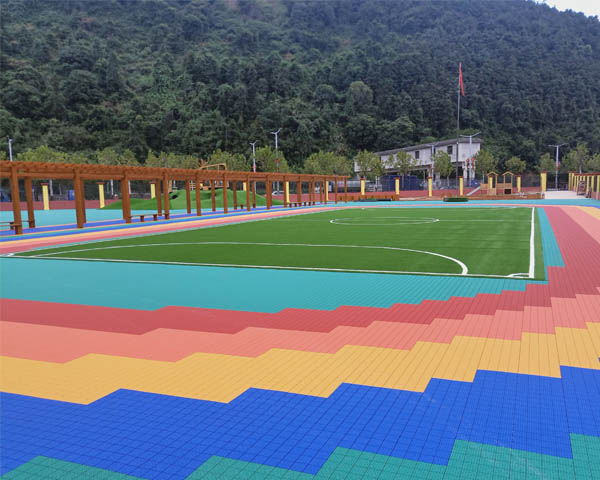Dec . 03, 2024 18:39 Back to list
Different Options for Basketball Court Flooring Materials and Their Benefits
Types of Basketball Court Flooring
Basketball is a fast-paced, high-energy sport that requires a playing surface that can withstand the rigors of the game while providing optimal performance for both players and fans. The flooring of a basketball court plays a crucial role in determining how well the game is played. The right type of flooring can enhance player performance, safety, and overall game experience. In this article, we will explore the different types of basketball court flooring, discussing their features, benefits, and drawbacks.
1. Wood Flooring
Wood is the traditional choice for basketball courts, particularly in indoor arenas. Often made from hard maple, wood flooring is renowned for its durability, resilience, and aesthetic appeal. The smooth surface of wood enables swift movement and quick changes in direction, making it ideal for the fast-paced nature of basketball.
Benefits - Bounce and Natural Traction Wooden floors provide an excellent bounce for the basketball, enhancing gameplay. The natural texture allows for better grip, reducing the risk of slipping. - Aesthetic Appeal The warm, classic look of wood adds to the ambiance of indoor courts. - Comfort Wood floors offer a somewhat cushioned surface that helps reduce player fatigue during games.
Drawbacks - Cost Installing and maintaining wood flooring can be relatively expensive compared to other materials. - Maintenance Wood requires regular maintenance to prevent warping, splintering, and damage from moisture.
Synthetic flooring has gained popularity over the years due to its versatility and lower cost compared to wood. Common materials include polyurethane and rubber, which can be customized for various venues.
Benefits - Durability Synthetic options are generally more durable and resistant to wear than wood. - Variety of Designs Manufacturers offer synthetic flooring in a range of colors and patterns, allowing for customization to match team colors or branding. - Lower Maintenance Needs Synthetic surfaces typically require less upkeep than wood, making them more manageable for facilities.
Drawbacks - Less Authentic Feel Some players feel that synthetic floors do not replicate the feel of traditional wood surfaces, which can impact gameplay. - Potential for Injury Depending on the design and material, synthetic floors may not provide the same level of shock absorption as wood, leading to a higher risk of injury.
types of basketball court flooring

3. Gymnasium Tile
Gymnasium tile, often made from vinyl or linoleum, is commonly used in schools and recreational facilities. These tiles can be installed over concrete or existing flooring, offering a cost-effective solution for basketball courts.
Benefits - Affordability Gymnasium tiles are one of the least expensive flooring options available. - Easy Installation and Replacement Individual tiles can be replaced if damaged, leading to lower long-term maintenance costs. - Variety of Styles Similar to synthetic flooring, gym tiles come in various colors and designs, creating a visually appealing environment.
Drawbacks - Less Performance Quality The performance characteristics of tile flooring may not match those of wood or high-quality synthetic surfaces. - Comfort Issues Some players find tile floors to be harder and less forgiving on joints than wood or cushioned synthetic surfaces.
4. Outdoor Basketball Court Surfaces
For outdoor courts, surfaces are designed to withstand the elements while providing adequate traction and bounce. Common materials include asphalt, concrete, and specialized outdoor sports tiles.
Benefits - Weather Resistance Outdoor surfaces are built to endure rain, sun, and temperature fluctuations without deteriorating. - Cost-Effective Typically, outdoor courts are less expensive to install than indoor wooden courts, making them accessible to communities and schools.
Drawbacks - Surface Hardness Outdoor surfaces are generally harder, which can lead to increased wear on joints and a higher risk of injury. - Limited Bounce and Traction The performance can be inconsistent compared to high-quality indoor surfaces.
Conclusion
Choosing the right type of basketball court flooring is essential for optimizing performance and ensuring player safety. Each flooring option—wood, synthetic, gymnasium tile, and outdoor surfaces—has its own benefits and drawbacks. Ultimately, the decision should be based on budget, intended use, and personal preferences. By understanding the features of each type, facility managers, schools, and athletic organizations can create the best possible playing environments for athletes and fans alike.
-
Sport Court Tiles with AI Innovation | Durable & Safe
NewsAug.01,2025
-
Vinyl Carpet Flooring | Durable & Waterproof Design
NewsJul.31,2025
-
Premium Basketball Board Stand with GPT-4-Turbo AI
NewsJul.31,2025
-
Premium Maple Flooring for Gyms & Homes | PVC & Vinyl Options
NewsJul.30,2025
-
Premium Outdoor Basketball Court Tiles for All Weather Use
NewsJul.30,2025
-
Durable Basketball Board Stand for Indoor & Outdoor Use
NewsJul.29,2025

